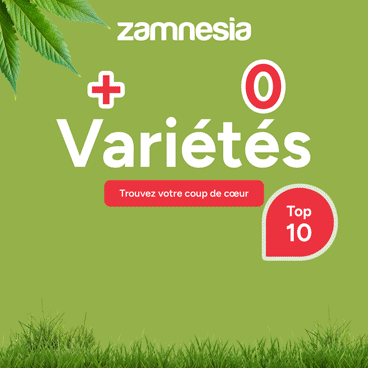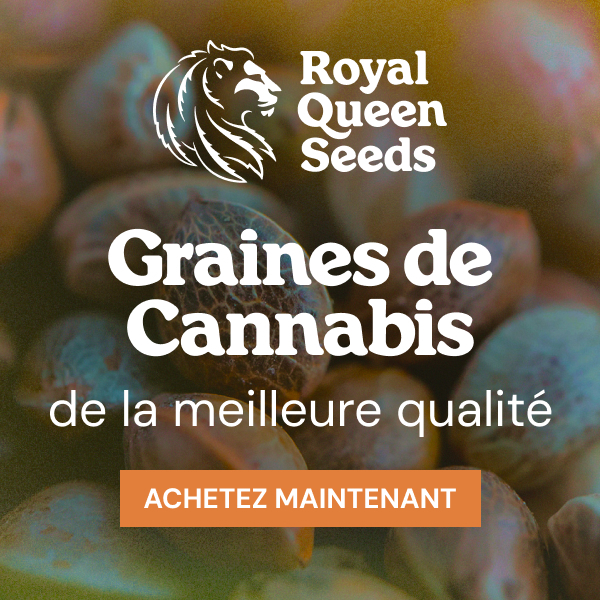Kashmir
élevé par ACE SeedsIci vous pouvez trouver toutes les informations sur Kashmir de ACE Seeds. Si vous recherchez des informations sur Kashmir à partir de ACE Seeds, consultez notre : Informations de base, Galerie, Dégustation, Trophées, Recensions, Comparaisons Directes, Lignée / Généalogie, Hybrides / Croisés, Commentaires de l'utilisateur, pour cette variété de cannabis ici sur cette page et suivez les liens pour obtenir encore plus d'informations. Si vous avez des expériences personnelles avec la culture ou la consommation de cette variété de cannabis, veuillez utiliser les télécharger des liens pour les télécharger dans la base de données!
Informations de base
Kashmir is an indica from ACE Seeds et peut être cultivé indoors, outdoors and greenhouse (Là où les plantes auront besoin d'une période de floraison de ±63 jours) ACE Seeds Kashmir est Même quantité de THC et de CBD n'est/n'a jamais été disponible en graines féminisées.
Description de ACE Seeds
Pure indica hash plant from Kashmir of great quality and consistency. It produces gorgeous, dense, resinous buds with a high flower/leaf ratio for an indica landrace. It matures in about 9 weeks, with most plants developing beautiful, intense shades of red, purple, and even black, which become more pronounced with cooler temperatures during flowering.
The smoke is thick with a juicy lemony profile, consistently dense and satisfying, with additional notes ranging from floral, earthy, to gas, mint, wet peat, livestock, leather, hash, and herbivore shit. The depth and quality of its terpenes on the palate, and its effects are on par with the finest traditional Kush strains.
Seedlings captivate from germination with their huge, dark, broad leaves and wide leaflets of ‘jurassic’ indica. The plants grow into stocky, columnar structures with medium internodal spacing (even large for an indica), featuring few but very robust branches.
This is a result of selective inbreeding, derived from the offspring of the best female from the original Kashmir (P1) seeds, preserving the different THC and CBD chemotypes at the population level, and consistently producing high CBG content. Two main morphological phenotypes and a few less common variations are found within this lineage.
The first main phenotype has huge dark hash plant indica leaves, with intense purples, reds, and even black hues on both the flowers and nearby leaves, which curve at the edges from the resin. The second phenotype has medium sized leaves and leaflets of medium green intensity, and its leaves near the flowers don’t pigment as readily, and the flowers show color toward end of flowering.
An exclusive indica delicacy rarely encountered in a lifetime, that for our 20th anniversary, we wanted to make accessible to all growers, especially landrace enthusiasts, who will be captivated by this unique, unhybridized, pure indica, never previously introduced to the market.
CANNABIS IN KASHMIR
The cannabis culture of Kashmir is fascinating due to its richness and diversity, reflecting the deep connection of its local cultures (which dates back to the dawn of time) with this plant. The use of cannabis in this region is rooted in ancient traditions and spans a wide variety of contexts: medicinal, recreational, religious (Hindus and Sufis), nutritional, as raw material (mainly fiber) and for economic purposes in general.
In terms of medicinal properties, cannabis in this area has traditionally been used for its effectiveness and versatility in treating a variety of ailments, such as gastrointestinal issues, physical pain, depression, cholera, ulcers, leprosy, relief from menstrual and childbirth pain, with astringent and toning properties. It is even used in veterinary care to treat bodily pain and combat intestinal worms in livestock.
Two main groups must be distinguished when evaluating the cannabis genetic myriad from this part of the world. On one hand, there are highly diverse populations of wild primordial cannabis sativa, with tall structures, thin leaves, open flowers, and low THC content (though often moderate in CBD), which have proliferated for millennia in this and other regions of India, Pakistan, Nepal, and Bhutan.
These sativa populations fruit wild (even invasively) in open fields, riverbanks, along roadsides, mountain slopes and between crops. The ancestral Kashmiri hashish comes from these wild sativas as charas, which is made by rubbing the flowers during maturation to extract their resins.
The other main group, to which this excellent new Kashmir landrace belongs, includes all the indica strains from this region, mainly cultivated in the southern part, and domesticated by humans specifically for hashish production. These populations have robust, columnar, and compact structures, with few but powerful branches, and big (often huge), dark, broad leaves, generally exhibiting archetypal indica traits that inevitably evoke Afghan strains.
These domesticated indica varieties also differ from the wild sativa types in that they have been selected over generations to produce much denser and more resinous flowers, with a higher cannabinoid content. Most of the time, these indica varieties are rich in both THC and CBD at the population level, as is the case with this Kashmiri strain and other traditional hash plants.
The origins of these domesticated indica landraces in Kashmir are uncertain. It is well known that for centuries, much of the highly prized hashish from Yarkand (now in Xinjiang) reached India (most likely along with seeds) through Leh in Kashmir, becoming one of the most cherished trade goods coming from Central Asia. This importation of hashish was banned by the Indian government around 1937.
Hashish production in Kashmir and its export to other countries thrived until the early 20th century, after which it became much more limited compared to the powerful emerging markets in Afghanistan, Morocco, Lebanon, and Pakistan, which developed in the 1960s and continue to lead the global hash production to this day.
Due to the proximity and trade between the various peoples of South Asia, the influence of Pakistani and Afghan indica genetics on the development of the Kashmiri indica genotypes is significant. In fact, Afghan genetics and the sieved hashish extraction method reached Kashmir by the late 1970s and 1980s, becoming the method used for extracting hashish from domesticated indica varieties.
These two main groups (wild sativas and domesticated indicas) have interbred over decades without human intervention, generating new wild intermediate populations.
Due to the high latitude of the region around 30°N (the limit where psychoactive landrace varieties can be found in the world), as well as the altitude and rugged geography of these lands (sculpted by tall mountains, rivers, lakes, and beautiful valleys), all Kashmiri genetics (both wild sativas and cultivated indicas) mature quickly and have developed high resistance to humidity, cold, and fungi, as they must flower during the rainy monsoon summer with cold nights.
Therefore, Kashmiri indicas are distinguished from Afghan ones by their greater resistance to humidity and fungi, as well as their evolution in a different geography under the influence of different peoples.
These conditions have led to peculiarities that give the finest Kashmiri hashish its unique character and masterful quality, contributing (whenever it has made its way to the West) to its prestige among connoisseurs worldwide.
Genetics | 3rd generation 100 % indica from Kashmir.
Type | LANDRACE STRAIN (P3)
Format | Regular
Sativa / Indica ratio | 100 % indica
THC | 0.03-15.71 %
CBD | 0.03-15.71 %
CBG | 0.45-1.36 %
Flowering indoors | 9 weeks
Flowering outdoors | Early October
Yield | Average
Resistance against spider mites | Average
Resistance against powder mildew | Average-High
Resistance against botrytis | High
Resistance against white fly | Average
Resistance against cold | High
Resistance against heat | High
Latitude | 0º-45º
Structure | Robust, columnar, with medium-long internodal spacing, and few but powerful branches. Big, dark, broad leaves very wide leaflets of ‘jurassic’ pure indica.
Bouquet | Hashy subtle aromas during flowering and after harvest, making it discreet in terms of smell during cultivation and storage. After curing, it then surprises with a very dense, elegant lemony smoke, which depending on the individual, may be accompanied by floral, sweet, meaty, gas, mint, wet peat, leather and top-quality blonde hash flavours and livestock and goat shit scents.
High | Consistent and top quality indica effects of medium-high potency. Warm, cerebral, lucid (clearing the mind) onset, positive, even with some euphoria and motivation, gradually progressing into very pleasant and healing physical and mental sensations, washing away any bad vibes from the day, leading to a sublime non intoxicating body relaxation. Feeling of having smoked very high-quality hash. Its psychoactivity is appropriate for lucid, solitary, and peaceful moments, as well as for preparing for rest.
Terpene Profile | It mainly contains the following monoterpenes: moderate-high levels of beta myrcene, moderate levels of limonene, and small amounts of trans ocimene, linalool, alpha pinene, and beta pinene. Sesquiterpenes: high levels of beta caryophyllene, moderate levels of alpha humulene, and small amounts of alpha bisabolol and trans nerolidol.
Growing Tips | Indoors, it can be grown very easily under an 18/6 photoperiod for the vegetative stage and 12/12 for flowering. Outdoors it can be grown up to 50º latitude in a wide range of climates: humid, dry, warm, and cold, including northern countries from Central and Eastern Europe. New pure indica line with huge potential for the development of new hybrids yet to be explored. While Afghan genetics dominate modern indoor indica genotypes, Kashmiri indica varieties are far less known and have barely been introduced into Western breeding. We recommend moderate-high levels of nutrients for the whole cycle.
Critiques sur Kashmir
Dégustation de Kashmir
Effet/Efficacité
Odeur / Arôme
Goût
Galerie Kashmir
Ici vous voyez les dernières photos de Kashmir, téléchargées de nos utilisateurs. Nous avons collecté au total 1 photos de la ACE Seeds - découvrez notre Galerie Kashmir pour les voir toutes.Comparaisons Kashmir
Comment pousse et agit Kashmir comparé à d'autres variétés ? 0 utilisateurs de Seedfinder ont téléchargé des comparaisons directes avec la variété Kashmir de ACE Seeds et l'ont comparée à 0 autres variétés de cannabis.
ACE Seeds Kashmir:Kashmir Lignée / Généalogie
Hybrides & Croisements avec Kashmir
Nous avons trouvé 0 descendants directs de ACE Seeds dans la base de données de seedfinder.eu, ici un bref aperçu. Pour voir tous les hybrides et leurs descendants, visitez notre Page Généalogie de Kashmir et découvrez tous les descendants directs, les croisements comme ceux des générations suivantes.
Kashmir Commentaires des utilisateurs
Ensemble, nous avons recueilli 0 à propos de ACE Seeds.Malheureusement aucun de ces commentaires n'est en fr !
Envoyez votre info sur cette variété ici:
Savez-vous quelque chose de plus sur ACE Seeds? Aidez s'il vous plaît à améliorer cette base de données et téléchargez / connectez vos informations ici!
Photos
Les images parlent plus que les mots ! Téléchargez vos photos "Kashmir" ici et aidez les autres producteurs à avoir une meilleure impression de cette variété.Comparaisons
Kashmir VS. Formulaire de comparaison directe des déformationsRecension de Variété
Nos critiques de variétés sont multilingues, consultables et peuvent être très détaillées - y compris des données sur la culture, l'arôme, les effets et le goût ! S'il vous plaît téléchargez votre avis Kashmir ici pour aider les autres utilisateurs de Seedfinder !
Valeurs Pharmaceutiques
Avez-vous de l'expérience avec les qualités médicales de Kashmir ? Partager vos informations ici peut peut-être aider d'autres personnes !
Sujets
Vous êtes tombé sur une discussion liée à Kashmir dans un forum ou une communauté de producteurs ? Connectez-le ici et permettez aux autres utilisateurs de trouver ces informations rapidement et facilement !
Vidéos
Vous avez trouvé une vidéo connexe contenant des informations supplémentaires ou des informations sur la croissance de Kashmir sur YouTube ? Veuillez le connecter ici à la page d'informations sur la variété !




